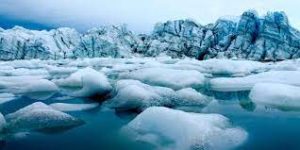Black Carbon And Glacier Melting:

The report titled “Glaciers of the Himalayas: Climate Change, Black Carbon and Regional Resilience” says that the glaciers are melting faster than the global average ice mass. However, the strong policy on black carbon can sharply cut glacier melt.
- The research report is released by the World Bank and covers the Himalaya, Karakoram, and Hindu Kush (HKHK) mountain ranges.
About Black Carbon:
- BC is a short-lived pollutant that is the second-largest contributor to warming the planet behind carbon dioxide (CO2).
- Unlike other greenhouse gas emissions, BC is quickly washed out and can be eliminated from the atmosphere if emissions stop.
- Unlike historical carbon emissions it is also a localised source with greater local impact.
Source of Black Carbon in Himalayan Region:
- Industry (primarily brick kilns) and residential burning of solid fuel together account for 45-66% of regional anthropogenic (man-made) BC deposition, followed by on-road diesel fuels (7-18%) and open burning (less than 3% in all seasons) in the region.
- Impact of Deposits of BC:
- It acts in two ways hastening the pace of glacier melt:
- By decreasing surface reflectance of sunlight.
- By raising the air temperature.
Rate of De-glaciation:
- The rate of retreat of HKHK glaciers is estimated to be 0.3 meters per year in the west to 1.0 metres per year in the east.
- Full implementation of current policies to mitigate BC can achieve a 23% reduction but enacting new policies and incorporating them through regional cooperation among countries can achieve enhanced benefits.
- National Mission on Sustaining Himalayan Ecosystem (NMSHE) is one such policy adopted in India.
- It is one of the eight missions under the National Action Plan on Climate Change (NAPCC).
- BC deposits can be sharply reduced through new, currently feasible policies by an additional 50% from current levels.




